
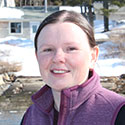
Principal Investigator
Associate Professor, University of Maine
Dr. Rhian Waller is an associate professor of marine sciences at the University of Maine. She received her bachelor’s degree at the University of Wales, Aberystwyth, and her Ph.D. at the National Oceanographic Centre, Southampton, also in the UK. She first came to the U.S. for a postdoc at the Woods Hole Oceanographic Institution in 2004, and has been in the U.S. ever since. Her research is mainly focussed on the reproductive ecology of deep-sea organisms, primarily cold-water corals, and how this important process is affected by environmental change (natural and human caused). A large part of her research program looks at where cold-water corals live around the globe (biogeography), so that her research group can start to hypothesize larval transport linkages and what is possible given a species’ reproductive potential. She has a particular interest in learning more about the corals in Glacier Bay National Park since going there in 2010 and seeing both the park, and the corals that live in the deep fjords, first hand.
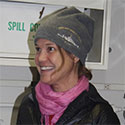
Principal Investigator
Research Geneticist, U.S. Geological Survey, Leetown Science Center
Dr. Morrison has always loved the ocean, from tide pools in the northeastern U.S. to tropical coral reefs. She followed this passion through an undergraduate degree in Marine Biology from the University of North Carolina at Wilmington (1991), and a Ph.D. from Florida State University in Biological Sciences (1997). She has been studying deep coral ecosystems for over a decade in the Gulf of Mexico, Atlantic, and Pacific Oceans, and has participated in over 20 research cruises using submersibles and remotely operated vehicles (ROVs). Her current research involves the utilization of genetic and genomic techniques to aid in the study of biodiversity at deep reefs (both identifying corals and associated organisms), and to estimate connectivity, or dispersal of juvenile coral larvae, between geographically separated populations. Since highly connected populations are likely to be re-populated following damage, estimates of connectivity inform managers about sensitivity of populations to disturbance. During the mission she will be leading nighttime ROV operations and collecting samples of red tree coral (Primnoa pacifica) for an on-going studies of connectivity and food webs among Gulf of Alaska and fjord populations.
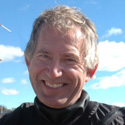
Photographer
U.S. Geological Survey
Dann Blackwood is never far from water whether he’s at home, at work, or at play. Born in Southern California, he bonded with the liquid world early on. Once he tried on a mask and snorkel and he is now rarely in the water without them. A field trip in grade school on an oceanographic ship played a part in his career choice. The family moved to Vermont after years of summering there and its many lakes and ponds increased his interest in the water. Later, he attended Florida Institute of Technology in Jensen Beach and became a SCUBA diver, a lifelong dream. He got a degree in Oceanographic Technology and took all the photography courses that were offered. This interest had started in middle school when he saw the magic of the darkroom in the back corner of the history classroom. He followed up by graduating with a Photography Degree from Syracuse. He had thoughts of trying to combine his two interests and found a job at the U. S. Geological Survey in Woods Hole, Massachusetts. There he gets to use imaging tools in the water and has been able to work in places like Micronesia, Europe, the Caribbean, and Antarctica. He lives on Cape Cod with his wife (that he met at Syracuse) and they have raised two boys who love the water as much as he does.
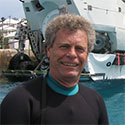
Volunteer
Growing up in the Virgin Islands gave Rod an appreciation for the ocean and spawned a dream to live and work underwater. After graduating with a B.S. in Biology from New Mexico State University, he was hired as a support diver for a saturation habitat program called Hydrolab, which was funded by NOAA’s Manned Undersea Science and Technology Program. As staff, he helped provide full support for week-long saturation missions during which four aquanauts at a time lived and worked underwater in Hydrolab. Through this job, Rod found that he preferred the technical side of supporting research, so he found his way to the Woods Hole Oceanographic Institution (WHOI), working as a mechanical technician for the deep-diving submersible Alvin. He returned to school to obtain a B.S. in Mechanical Engineering in 1995. He has provided engineering and operational support for Alvin, including many cruises, with a great variety of science programs, to amazing areas of the world. He also participated in the design and fabrication of ABE, one of the very early autonomous underwater vehicles. Work at WHOI provided Rod with many opportunities to work with amazing people, travel to fantastic places, help build and operate cutting-edge equipment and, after 33 years, to retire and volunteer on more great projects.
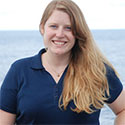
Field Operations Specialist
NOAA Office of Ocean Exploration and Research
Kasey Cantwell is a Field Operations Specialist in the NOAA Office of Ocean Exploration and Research (OER). Kasey finished her Masters of Science in 2013 at the University of Miami’s Rosenstiel School of Marine and Atmospheric Science (RSMAS). Kasey’s background includes field work on reefs throughout the Caribbean, long-term ecosystem monitoring, and evaluating management strategies. Kasey has been on numerous expeditions since joining OER in 2012.
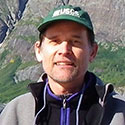
Research Geophysicist
U.S. Geological Survey
Guy R. Cochrane is a research geophysicist at the U.S. Geological Survey. He specializes in benthic habitat mapping. He is the co-chief of the California Seafloor and Coastal Mapping Program. He is on the Coastal and Marine Ecological Classification Standard (CMECS) working group and supervised the production of CMECS maps for Glacier Bay National Park.
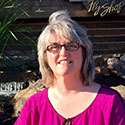
High School Science Teacher
Lower Yukon School District - Scammon Bay School
Mary is the high school science teacher in beautiful Scammon Bay, Alaska, of the Lower Yukon School District. Scammon Bay is a Native Yupik Alaskan village situated on the vast tundra bordering the Askinuk Mountains and the Bering Sea. Before moving to Alaska, Mary taught for 30 years in Arkansas where she earned her Masters degree and became a Nationally Board Certified Teacher. Mary also co-authored the first NOAA Teacher at Sea children’s book entitled, “Miss Cook’s Voyage on the Ronald H. Brown,” which shares her experiences working with scientists during her first Teacher at Sea voyage. Mary loves to teach and facilitate science learning to young people and hopefully inspire them to pursue their dreams in a science-related career. At Scammon Bay School, Mary works with the Tsunami Bowl Team, helps coordinate the Science Fair, and facilitates the Salmon in the Classroom project. Her hobbies include reading, traveling to new places, and learning about different cultures.
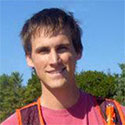
Graduate Student
University of Maine
Eric Glidden is a graduate student at the University of Maine, based at the Darling Marine Center studying the population dynamics of deep-sea corals. He completed his undergraduate degree at the University of Maine in Orono. He will be providing technical support and assistance during the cruise.
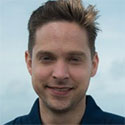
Founder
Juice Robotics LLC
Matt Jewell is Founder of Juice Robotics LLC, which focuses on the introduction of disruptive technologies into the offshore industry, to remove the barriers to exploration. Matt also works as a remotely operated vehicle pilot on a contracting basis. When he is not at sea or in the start-up environment, Matt is relaxing with his wife Jessica and rescue dog Goldie. Matt graduated from the University of Rhode Island in 2010 with a BS in Ocean Engineering. He also has a BFA from the Rhode Island School of Design.
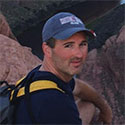
Technical Director
University of Connecticut’s Northeast Underwater Research Technology and Education Center
Kevin Joy is the Technical Director for the University of Connecticut’s Northeast Underwater Research Technology and Education Center where he has found his home designing, developing, and operating remotely operated vehicles (ROVs) and other underwater scientific sampling systems for science. Kevin earned his B.E.D in “Environmental Design” from the University of Colorado in 1992, and an M.A. in Geography in 1994, where he specialized in Geographic Information Systems (GIS). He became involved in NOAA’s National Undersea Research Program in 1996, as part of the National Undersea Research Center at the University of Connecticut. During his past 19 years at the Center, he has worn many hats relating to the administration and facilitation of undersea research and has had the pleasure of providing field support as an ROV supervisor, pilot, and/or navigator for over 43 scientific ROV and submersible operations.
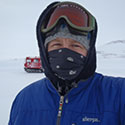
Assistant Professor
University of Alaska Fairbanks
After receiving her undergraduate and graduate degrees at Portland State University in Portland, Oregon, Dr. Kelley went on to complete a National Science Foundation Postdoctoral Fellowship at the University of California, Santa Barbara. She is now poised to start a tenure-track faculty position at the University of Alaska Fairbanks. Her research interests include understanding the biological impacts of ocean change, with a focus on characterizing environmental variables associated with ocean change (e.g., ocean acidification, temperature, hypoxia); using remote oceanographic sensors; and pairing collected data with laboratory studies to measure the physiological response of species to ocean change. She is particularly interested in understanding ocean change impacts in polar marine ecosystems, areas that are predicted to be the first to experience such changes.
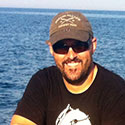
ROV Technician/Research Associate
Northeast Underwater Research, Technology and Education Center - University of Connecticut
Mike earned his M.S. in Oceanography from the University of Connecticut in 2002. His master’s research focused on the role of benthic invertebrates in nutrient cycling. Since then, he has worked with the Northeast Underwater Research, Technology and Education Center (NURTEC) at the University of Connecticut and applied his scientific background in benthic ecology and experience with computers and electronics to work closely with marine researchers in the field of ocean technology. Mike has over 15 years of experience with remotely operated vehicles, marine operations, integrated navigation systems, and scientific sampling protocols. He and his colleagues apply hard work and ingenuity to meet NURTEC’s mission “to facilitate ocean research and exploration through the development and support of undersea technologies.”
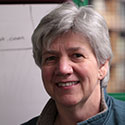
Research Geologist, Emerita
U.S. Geological Survey
I have been a research geologist with the U.S. Geological Survey’s Coastal and Marine Geology Program since 1979. My research focus is on understanding inter-relationships between biological communities and geologic processes in benthic marine habitats and involves mapping and interpreting the surficial geology of seafloor environments using sidescan-sonar, seismic-reflection, sedimentological, and bathymetric data. I have worked in a wide variety of geological environments, ranging from the shallow estuarine waters of Penobscot Bay, Maine to the floor of the 8,000-meter deep Puerto Rico Trench, to seamounts in the Drake Passage off Antarctica.
I became interested in geology as an undergraduate at Cornell University where I was studying archaeology. I was captivated by the dynamic nature of Earth processes, the lure of working outside, and the spirit of camaraderie that I saw among geologists, and so changed my major. In grad school at the State University of New York Albany, I had the opportunity to participate in an oceanographic research cruise where we carried out sampling and surveying operations and supported Alvin submarine dives in the Cayman Trough in the Caribbean Sea. The excitement of exploring places that were completely unknown to humans hooked me and after I finished my M.S. I found a job at the USGS in Woods Hole. Last year, after a 36-year career, I retired and became Scientist Emerita. This allows me to continue to participate in exciting explorations like this Glacier Bay expedition, while also devoting more time to my family; my dog; sailing; traveling; and volunteering with my favorite environmental, animal rescue, and therapy dog organizations.